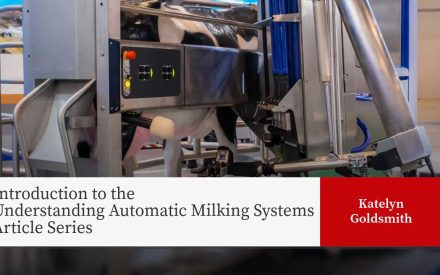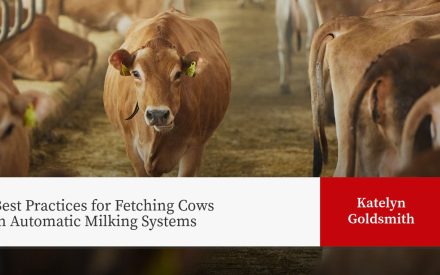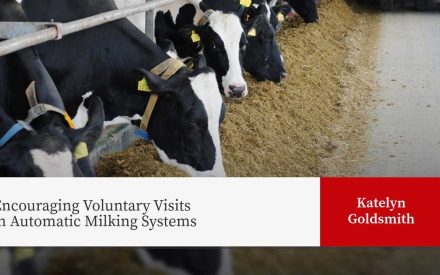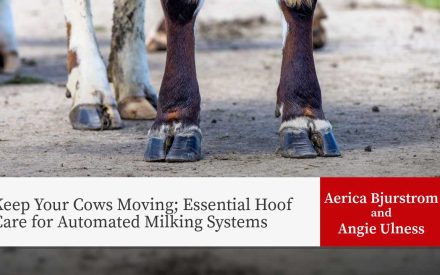
Introduction
There is no doubt that Automatic Milking Systems (AMS) 🔍 have transformed modern dairy farming and are here to stay. In fact, there are a series of advantages associated with AMS, with reduced labor needs and improved working conditions and flexibility being among the main reasons for their adoption. However, it is important to highlight that this increase in work flexibility does not mean a complete lack of routine with the AMS.
It is well established that dairy cows like consistency in their daily routines. Like cows, an AMS also requires routine and consistency, especially regarding its maintenance. In fact, proper maintenance of an AMS is fundamental to keeping the system functioning properly and to prevent long, costly, and unexpected shutdowns. Prolonged shutdowns have a negative impact on production and increase animal competition around the AMS. With that in mind, all maintenance tasks requiring short-time system shutdown or scheduled downtime should be performed in periods of low cow traffic to the AMS. Furthermore, on farms with multiple AMS in one pen, ensure at least one AMS remains functional while others undergo maintenance.
Maintaining an AMS is like maintaining a car or a tractor. Many maintenance tasks are simple, routine, require minimal time, and can be performed by farm staff. Yet, there are more complex tasks that require advanced planning and specialized labor. In this article we provide an overview of important routine maintenance tasks to improve the performance and longevity of your AMS. However, just like car maintenance, it is important to note that each AMS has specific manufacturer requirements. Therefore, it is essential that you work with your AMS dealer and service provider to properly determine the maintenance protocols and timelines that work best for your farm.
Daily AMS Maintenance Tasks
Daily AMS maintenance ensures the system is clean and working properly. These tasks, though individually quick and simple, often consume the most time because they must be performed multiple times daily and require attention to detail. However, they are arguably the most important maintenance tasks, given their immediate impact on AMS performance and milk quality. Some of these daily AMS maintenance tasks include:
- Clean the milk room, waiting area, AMS box (floor, exterior, arm, etc.), feed bowls 🔍, and sensors.
- Inspect the liners and milk, vacuum, water, teat dip, and chemical hoses to ensure there are no leaks, kinks, or clogs.
- Change the milk filter after every scheduled CIP wash cycle.
- Watch full milkings to check for any abnormalities on the robot arm 🔍 movement, unit attachment, pre-milking procedures, post-miking disinfection and feed bowl operations.
- Check AMS alarms 🔍and reports for additional maintenance needs, cows that need fetching 🔍, or cows with incomplete milkings 🔍.
Weekly AMS Maintenance Tasks
Like daily tasks, weekly AMS maintenance tasks also focus on ensuring that the system is working properly but concentrating on the long-term stability and performance of the system. These weekly tasks include a mix of quick and easy tasks as well as procedures that might require scheduled short downtime. These weekly AMS maintenance tasks include:
- Mark the levels of the teat dip and chemical barrels to track usage and confirm that dosing pumps are calibrated correctly.
- Check the level of pellet/concentrate bins and review AMS feeding reports to ensure feed is being dispensed and consumed as expected. Use this information to plan the next feed order.
- Inspect the teat cleaning system (brushes, sprays, or teat cleaning cups) to confirm it is working properly.
- Check the AMS for loose bolts, fittings, connections, or damaged wires.
- Restart the AMS and calibrate the sensors.
- Check the air filter and vacuum pump oil level in the AMS.
- Clean the inside of the milk filter canister.
- Verify the start and end temperatures of the CIP wash cycles.
- Clip or remove udder hair.
Other AMS Maintenance Tasks
While the timing for these tasks may vary by manufacturer, number of AMS units in a pen, and overall farm management, they are essential for both the short- and long-term success of AMS operations. Some of these tasks have automatic reminders from the AMS while others often require coordination and specialized labor from your AMS service provider. These tasks include:
- Replace liners, tubes, and hoses.
- Calibrate feed dispensers.
- Schedule preventative maintenance visits with your service provider.
Conclusions
In this article we covered essential tasks to support the smooth operation of AMS. Furthermore, at the end of this article you can find printable checklists to help you, and your team keep track of the AMS maintenance tasks discussed in this article. Regardless of how simple or complex those tasks might be, skipping them can have a negative impact on AMS performance, milk quality, and even animal production and health. Therefore, we highlight the importance of working closely with your AMS dealer and service provider to develop a maintenance plan that is tailored to your operation.
Author

Victor Cabrera
Dairy Systems Management Extension Specialist, Professor, Honorary Associate/Fellow– Dr. Cabrera uses applied research, interdisciplinary approaches, and participatory methods to deliver practical, user-friendly, and scholarly decision support tools for dairy farm management aimed to improve dairy farm profitability, environmental stewardship, and long-term sustainability of the dairy farm industry.
Reviewers
References
- Hovinen, M., and S. Pyörälä. “Invited Review: Udder Health of Dairy Cows in Automatic Milking.” Journal of Dairy Science 94, no. 2 (2011): 547-562. https://www.journalofdairyscience.org/article/S0022-0302(11)00003-8/fulltext
- Lage, C.F.D.A., Marques, T.C., Bruno, D.R., Endres, M.I., Ferreira, F., Pires, A.P.A., Leão, K. and de Lima, F.S., 2024. Farmers’ perceptions on implementing automatic milking Systems in Large USA dairies: decision-making process, management practices, labor, and herd performance. Animals, 14(2), p.218.
- Proudfoot, K.L., Weary, D.M., LeBlanc, S.J., Mamedova, L.K. and Von Keyserlingk, M.A.G., 2018. Exposure to an unpredictable and competitive social environment affects behavior and health of transition dairy cows. Journal of Dairy Science, 101(10), pp.9309-9320. https://www.journalofdairyscience.org/article/S0022-0302(18)30685-4/fulltext
- Rodenburg, J. and House, H.K., 2007. Field observations on barn layout and design for robotic milking. In Sixth International Dairy Housing Conference Proceeding, 16-18 June 2007,(Minneapolis, Minnesota)(Electronic Only) (p. 21). American Society of Agricultural and Biological Engineers.
- Siewert, J.M., Salfer, J.A. and Endres, M.I., 2018. Factors associated with productivity on automatic milking system dairy farms in the Upper Midwest United States. Journal of dairy science, 101(9), pp.8327-8334. https://www.journalofdairyscience.org/article/S0022-0302(18)30573-3/fulltext


 Introduction to the Understanding Automatic Milking Systems Article Series
Introduction to the Understanding Automatic Milking Systems Article Series Best Practices for Fetching Cows in Automatic Milking Systems
Best Practices for Fetching Cows in Automatic Milking Systems Encouraging Voluntary Visits in Automatic Milking Systems
Encouraging Voluntary Visits in Automatic Milking Systems Keep Your Cows Moving; Essential Hoof Care for Automated Milking Systems
Keep Your Cows Moving; Essential Hoof Care for Automated Milking Systems


